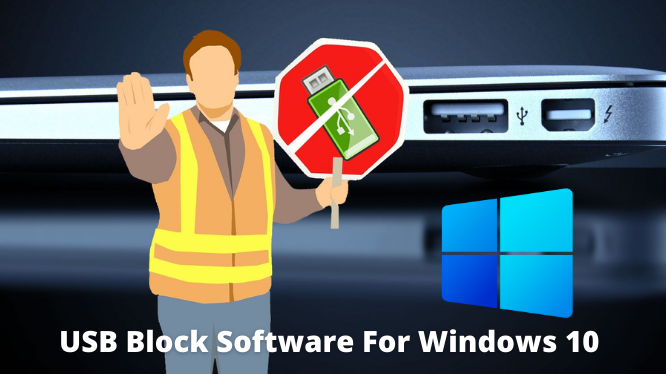Explore the Techniques to Lock USB Drive Windows 10, 8, 7 OS

When a user’s machine is shared at college, or in offices in groups, then a sense of security risk is felt by the user. Because their valuable data and information can be stolen by anyone. In this situation, it becomes necessary to lock USB drive windows 10, 8, and 7. Not blocking the USB ports is a serious issue, some people who connect their USB to their system might contain a virus that can severely corrupt or damage your files or the entire OS.
That’s why the user must disable their USB ports when used by other people. There are some users who know about this risk, and they block their system’s ports. However, few of them fail to block their machine’s USB ports. Numerous third-party tools are there that provide the facility but due to their complicated procedure and functionality and all.
So, here we will discuss some simple yet reliable techniques that can be used to restrict USB ports access.
Conventional Techniques Explained to Disable USB Access in Windows 10
To block the USB ports, users can simply follow the below-mentioned steps and lock all the US posts of the machine.
Enable or disable the USB Ports with the help of Registry Editor.
- On the system’s keyboard Press the “Window + R” key to open the RUN window. And type “regedit.exe“, then, hit enter to launch Registry Editor.
- After it gets launched, follow the path.
![]()
- Click on the Start option to open the “Edit DWORD (32-bit) Value” Window. If the data value is written “3” then change it to “4”. And to enable ports, then switch the data value to “4”.
Use Device Manager to Disable USB Ports
Users can use this method to lock USB drive windows 10 and other OS versions. Follow the simple steps mentioned here.
- Launch the Device Manager by typing it in the search field or press the “Windows + X” and hit on Device Manager.
- Now go to the Universal Serial Bus Controllers. Various devices will be available there
- On USB 3.0 right-click (or any mentioned device in your PC) and hit on Disable device, for blocking the user’s USB ports.
Limitations of Disabling USB Ports Manually
After manually disabling the USB ports, the USB ports can again be enabled if the system is shared by other users. As there is no security level provided. Hence, anyone can enable and disable the ports. After locking the ports, the data still remains at the risk.
Use the Experts Suggested Utility to Lock USB Drive Windows 10 and Other OS Versions
Now as we know that for a temporary basis you can enable or disable the ports whenever the user wants. However, the data remains at risk. Those who are using the user’s system can easily enable the ports and connect their USBs. So here it requires protection for USB ports and the crucial data. For that users can utilize the Secure USB Blocker Software to enable or disable the USB ports using a password or a Key. This adds a security level that no one can break through other than the owner of the system.
To use this password-protected USB locking tool. We have explained the steps in detail. Follow them carefully.
Step by Step Process to Use the Tool to Lock USB Port (Windows 10, 8, 7)
- Download and install the software to lock USB drive windows 10.

- Fill in the details asked. (Later this password will be required to enable or disable the ports).
- Now in the next window hit on the Block button and provide the password.

Then select the Ok button to Block USB ports.

Simple and short steps and all the USB ports will be blocked.
Note – This tool blocks all the USB ports, so the user does not get an option to block specific USB ports.
Also Read: How to Export NSF to PST Free Without Any Challenges
Conclusion
Several users’ systems get corrupted, or the data gets missing after they share their system with others. This kind of incident happens a lot when the system is shared in a group. So, to secure it from the above-mentioned issues, we have explained some manual methods and the most advanced solution lock USB drive Windows 10. That adds a protection level and eliminates the chances of system corruption and data stealing.




